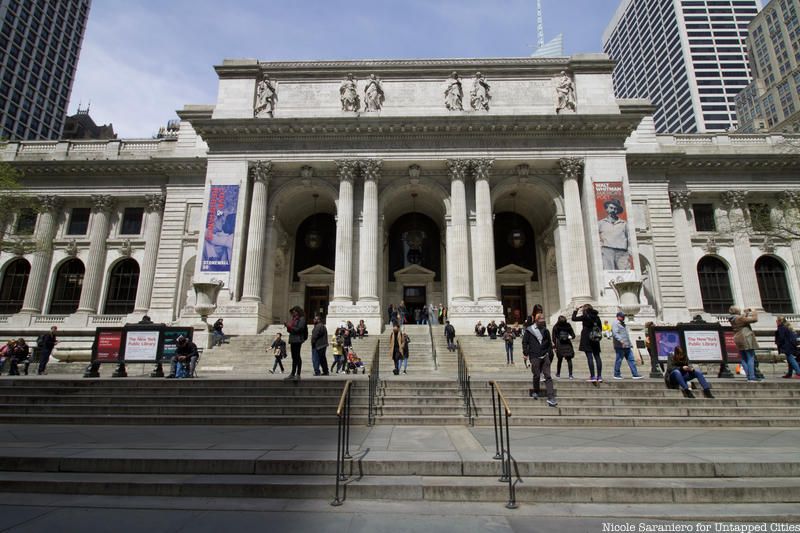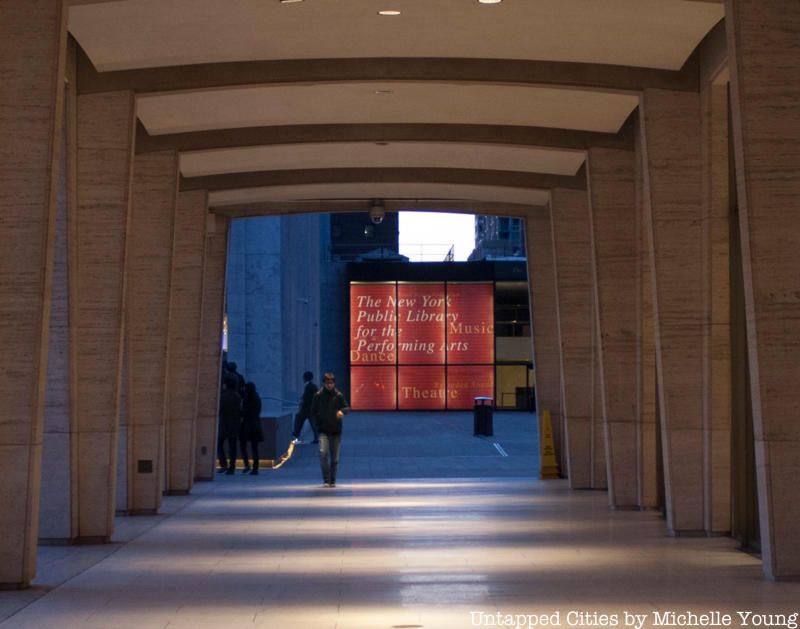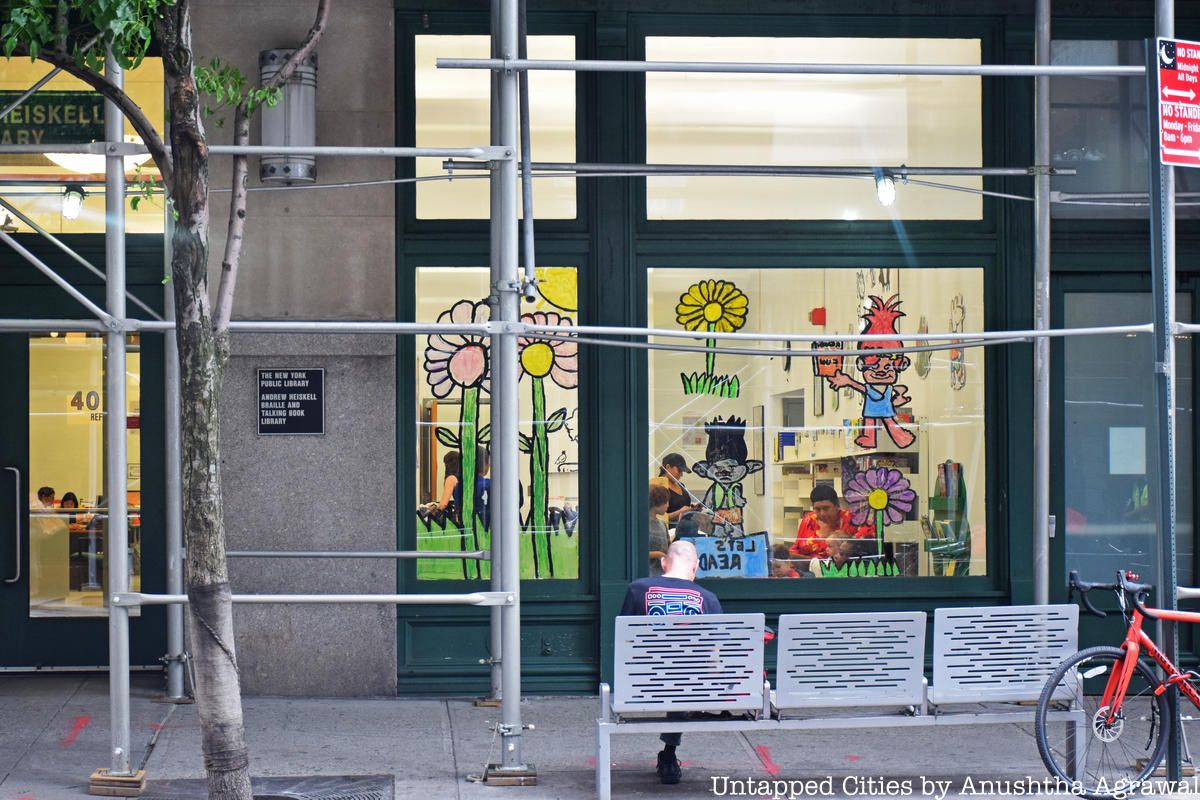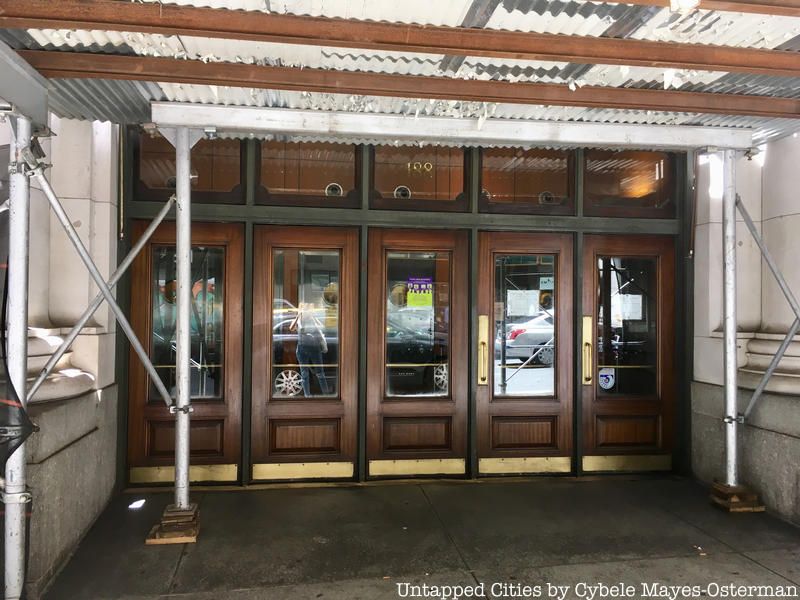100th Anniversary Great Nave Tour at the Cathedral of St. John the Divine
Celebrate the 1925 construction of the stunning nave inside the world's largest Gothic cathedral!



Most cities are lucky to have one library—New York City has dozens. With the rise of e-readers and digital media, libraries have fallen somewhat to the wayside but New York City, with its strong dedication to the arts and focus on preserving history, has kept multiple branches of the New York Public Library thriving despite the lack in some other cities. Here are 10 beautiful and niche New York City Libraries with their own history and charm.

The Stephen A. Schwarzman building is located on 476 Fifth Avenue and generally referred to as the “main branch” of the New York Public Library’s massive system of 88 branch libraries and four main research libraries. The Schwarzman building is well-known for its vast selection of books on humanities, social sciences, and a circulating children’s collection. The library has been known to push boundaries and regardless of the political climate of any given time, focuses on freedom of information even if the subjects may be considered offensive. The library also houses rare objects such as medieval manuscripts, ancient scrolls, and collector’s items like comic books and baseball cards.
One of the major players in making this library happen was Samuel J. Tilden who donated 2.4 million dollars to build a free library in the city that was becoming a major metropolis and needed a library to help the city expand on its urban culture. The Astor and Lenox libraries already existed at the time but they didn’t fall in line with Tilden’s vision of a massive and impressive public institution. The New York Public Library was born through the efforts John Bigelow, who put together a plan that used the resources of the Astor, the Lenox, and the Tilden Trust.
The plan was signed in 1895, and the dedication of the new library occurred on May 23, 1911, after 16 years of planning and acquiring a million books. The opening of the library was such a momentous occasion that the dedication was presided over by William Howard Taft and 30-50,000 visitors poured through the library on opening day.

The Jefferson Market Library, located at 425 Avenue of the Americas, is fondly referred to as “Old Jeff” by patrons of the charming and historical library. While the landmark building has only served Greenwich Village as a library for a little over forty years, it has a long history as a courthouse.
Frederick Clark Withers and Calvert Vaux designed the now landmark building that was built from 1875 to 1877. In the 1880s, a poll of architects voted it one of the “top ten most beautiful buildings in America.” Included in the building’s somewhat grim history as a court house was the 1906 case of the Girl in the Red Velvet Swing, which revolved around Harry K. Thaw’s jealous murder of the architect, Stanford White over White’s former relationship with Evelyn Nesbit.
In the 1920s, the courts were only used for trials of women and in 1929, the coed prison was replaced entirely by the Women’s House of Detention, which was one of the only Art Deco prisons in the world at the time. The building was almost knocked down when it had been taken over by vermin but famous members of the community such as E.E. Cummings, Philip Wittenberg, Margot Gayle, Lewis Mumford, and Maurice Evans fought to save it until 1961, when Mayor Robert F. Wagner announced its future as a library.
The Jefferson Market Library is known for its rare collections of the history of New York City with an emphasis on Greenwich Village. The library also has an extensive collection on the history of the building itself.


The New York Public Library for the Performing Arts is located on 40 Center Plaza and given New York City’s affinity for theater and the arts, unsurprisingly contains one of the most extensive collections of rare, circulating, and archival collections of performing arts materials in the world. In addition to books, the library contains multiple collections of autographed manuscripts, sheet music. videotapes, historic recordings, and other forms of media.
The Library for the Performing Arts features multiple exhibitions every year with previous topics including “Curtain Up, Celebrating the Last 40 Years of Theatre in New York and London” and more specific topics like “Laughter, Agita, and Rage, Political Cabaret in Isaiah Sheffer’s New York.” The library also hosts workshops and performances, making it the perfect combination for the many arts-inclined residents or visitors in New York City.

The Andrew Heiskell Braille and Talking Book Library only opened its current location 1991 on 40 West 20th Street, but its history extends over a hundred years. The building was originally called the Library for the Blind and Physically Handicapped and was opened in 1895 by Richard Randall Ferry, a rich hat manufacturer who lost his sight. Ferry’s extensive braille collection moved from various branches of the New York Public Library following its inclusion in 1903. Even then, the library offered free delivery accommodations for its blind patrons who couldn’t travel to the library.
As technology was developing, the desire for alternatives to braille deepened as it was difficult for people who were aging or those with fingertip sensitivities to effectively use braille. Technology had substantially developed since the phonograph but newer devices for voice recording were expensive, only had a short amount of playing time and weren’t very durable. In the 1930s, the technology had come a long way and talking book machines were a reality. Blind people were employed to test them through a Works Progress Administration employment program.
Through the years, as services for the blind and federal laws to extend services for children improved, the library moved to several larger locations to accommodate the increase in services. In the 1960s, open-reel tapes, audio cassettes, and flexible disks were added to the library’s collection. In the 70s, the New York Public Library was the first to provide a Kurzweil Reading Machine service that converted text into synthetic speech.
The new building was made to be much more accommodating than the previous renditions with barrier-free architecture, multiple braille reading rooms, large print books, and electronic resources. The library also contains rare documents like an original letter that Helen Keller wrote to the library in 1951.

Opened in 1884, the Ottendorfer is located on 135 Second Avenue. The neo-Italian Renaissance and terracotta putti building was designed by German architect William Schickel and is the city’s first free public library. The namesake of the library, Oswald Ottendorf, who owned the Staats-Zeitung newspaper, gifted the branch to New York City.
Ottendorf’s goal for the library was to assist German immigrants with fitting into American society by providing an evenly split library of books in English and German. The library has continued this goal and expanded it to include other languages in addition to German.

The Schomburg Center for Research in Black Culture. Image courtesy Schomburg Center for Research in Black Culture/NYPL.
Located in Harlem, the Schomburg Center for Research in Black Culture is located on 515 Malcolm X Boulevard and is a research branch of the New York Public Library. The center is made up of the connected Schomburg Building, the Landmark Building, and the Langston Hughes building. The building won the National Medal for Museum and Library Service in 2015 and it was named a National Historic Landmark in 2017.
In 1925, the Division of Negro Literature, History and Prints special collection was opened to address the desires of the modern patrons at the time. The collection gained notoriety and attention in 1926 when Arturo Alfonso Schomburg’s incredible collection of thousands of books, manuscripts, and paintings were added. Along with providing his collection, Schomburg was also the curator and the building was renamed after him following his death.
An expansion of the building took place in 1991 which included the American Negro Theatre, the Langston Hughes auditorium with 340 seats, and the center now houses over 10 million items in addition to offering concerts and lectures. The Schomburg Center for Research is one of the top regarded research facilities dedicated to preserving materials on the “global African and African diasporan experiences.”

The Fort Washington Branch of the New York Public Library is located on 535 West 179th Street. The library was built due to a sizeable donation by Andrew Carnegie and it opened its doors on April 14, 1914. Fort Washington is a great resource for people learning English as a second language as it has a significant number of texts in Spanish, Russian, and other languages. English classes are also provided.
The Fort Washington Library made a huge impact on multiple writers and famous patrons. Authors Edwin Newman and Henry Kissinger discussed the importance and impact the library had on them growing up. If the library wasn’t there to foster their love of reading and writing, the world might not have gotten to know their brilliance. Other notable patrons include Lou Gehrig, Jacob Javits, Maria Callas, Ralph Ellison, and Marianne Moore.

The Science, Industry, and Business Library is a research library located on 188 Madison Avenue. The collections in the library have a strong focus on business, investments, finance, industry, and technology. It’s one of the newer branches of the New York Public Library and has only been in operation since 1996.
The mission of the SIBL is to “commit its exceptional resources and expertise to providing open access information in support of education, research, and entrepreneurial activities.” Assistance is provided in researching government information like patents, trademarks, and historical reports. Other services offered are meeting room reservations, customized B2B lists, and relevant database use.

Chatham Square, one of the New York Public Library’s most trafficked branch, is located on 33 East Broadway. It opened in 1903 as a replacement for the New York Free Circulating Library. The building was designed by the firm, McKim, Mead, and White and was built with Carnegie’s gift to the city.
Since 1911, the library has been a vital component to Chinatown as it holds a circulating Chinese language collection. In addition to honoring Chinese culture, the library has a strong focus on collections for children and young adults. It is home to the children’s story-hour room and the immensely popular Summer Reading Celebration that attracts hundreds of children to the community room every August.

Opened in November of 1908, the Harry Belafonte 115th Street Library is located on 203 West 115th Street. The firm McKim, Mead, and White designed the “rusticated Italian palazzo style” three-floor building. In 1967, the building was declared a city landmark and in 1980, a national landmark.
The name was just changed this year to pay homage to Harry Belafonte, civil rights leader and supporter of free and equal education who was a purveyor of social justice. The library offers a community space that is used for after-school programs for the neighborhood children.
Next, check out 5 Authors Who Crafted Novels Around the Culture and Influence of NYC and 8 Homes of Famous Writers from Truman Capote to Edith Wharton. Get in touch with the author @LitByLiterature.
Subscribe to our newsletter